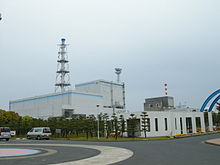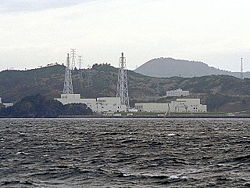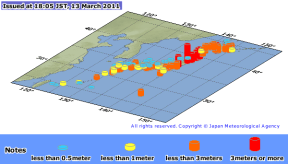The Aftermath of Japan’s Megaquake and the Unfolding Nuclear Crisis is Japan’s Worst Calamity since World War II: Prime Minister Naoto Kan
This Page would be updated throughout today, as new information becomes available.
Japan’s Nuclear Crisis:
The cooling system has failed at a third nuclear facility in Japan, following the M9.0 Mega Quake near Sendai.
The Tokai Nuclear Plant in Ibaraki prefecture is causing great concern. Two of its three diesel generators used to operate the cooling system have failed. The plant is located about 120km north of Tokyo.

Tokai 1 and 2 Nuclear Power Plants. Click image to enlarge and view licensing details.
Built in 1962, 1 was Japan’s first nuclear power plant. Having generated electricity for about 32 years it was decommission in 1998. Tokai 2 was built in 1973 and commissioned in 1978, Japan’s largest at the time with a generating capacity of 1,060 MW.
Meanwhile, a state of emergency has been declared at the Onagawa plant, where radiation readings have exceeded allowed limits, said Japan’s Nuclear and Industrial Safety Agency.

Onagawa Nuclear Power Plant is located in Ishinomaki city, Miyagi Prefecture, and is operated by the Tohoku Electric Power Company. Click image to enlarge and view licensing details.
The latest declaration is the third to be issued by the agency, with the first two still in force at Fukushima plant Nos 1 and 2.
- At Fukushima Plant No.1, at least two reactors may be experiencing partial meltdown. As a last option, sea water is being pumped into reactors 1 and 3 to prevent them from total core meltdown.
- On May 12 an explosion said to have been caused by hydrogen buildup tore through the walls of containment building of reactor 1.
- Up to 4 other reactors face the threat of explosion, due to excessive pressure, and possibly meltdown.
- As of 10:00UTC Saturday May 12, up to 300 people had received varying degrees of radiation, including 60 students at high school in Fukushima located about 3.5km from Plant No. 1, who were waiting to be evacuated.
- UPDATE: Radiation at Onagawa plant has returned to operating background levels, Japan’s Nuclear and Industrial Safety Agency has announced.
- Up to 170,000 people have been evacuated from a 20-km radii of Fukushima Plants 1 and 2.
- Tens of thousands of people were due to be evacuated from a 20-km radius of the Tokai plant.
People throughout Japan have been asked tio save electricity. About 1.8 million customers are currently without power.
In Tokyo area there’s a sever shortage of electricity, with only 75 percent of the demand currently being met. [Demand: 41 gigawatt; supply: 31 gigawatt]
Second Round of Tsunami Warnings
Japan Meteorological Agency (JMA) issued a new round of Tsunami Warnings for Japan Region at 03:20 JST, Saturday March 12. A Major Tsunami Warning covered the entire eastern seaboards of Honshu and Hokkaido islands.
See below for tsunami map and list of the prefectures under TSUNAMI WARNING.

Source: JMA. Click image to enlarge.
Maximum Tsunami Observation
The following Tsunami Observation Map (NUMBER 64) was issued at 18:05 JST 13 Mar 2011.

The Surviving Victims of the Mega Quake and Tsunami
The surviving victims are well and truly trapped. There are severe shortages of water, food and fuel, as well as clothes, sanitation and other basic amenities. Large areas have had no electricity sine the Megaquake struck about 70 hours ago. Many people are attempting to leave the disaster zones; however, there are no plains, trains or any other form of transport. Automobiles are not going anywhere, anytime soon. There are long lines of vehicles outside gas stations waiting to be filled, some reportedly as long as 10-mile. Many people are sleeping in their car in order not to miss their turn.
Many roads have been destroyed or severely damaged in Miyagi prefecture, as far as in the Tokyo area, in northern Japan, and in the far-northern Iwate prefecture. The toll road highways are restricted to emergency vehicles only, according to reports.
The Aftershocks
As expected, the aftershock, some of them powerful quakes in their own right, continue to rattle the eastern seaboard of Japan’s main island of Honshu.

No comments:
Post a Comment